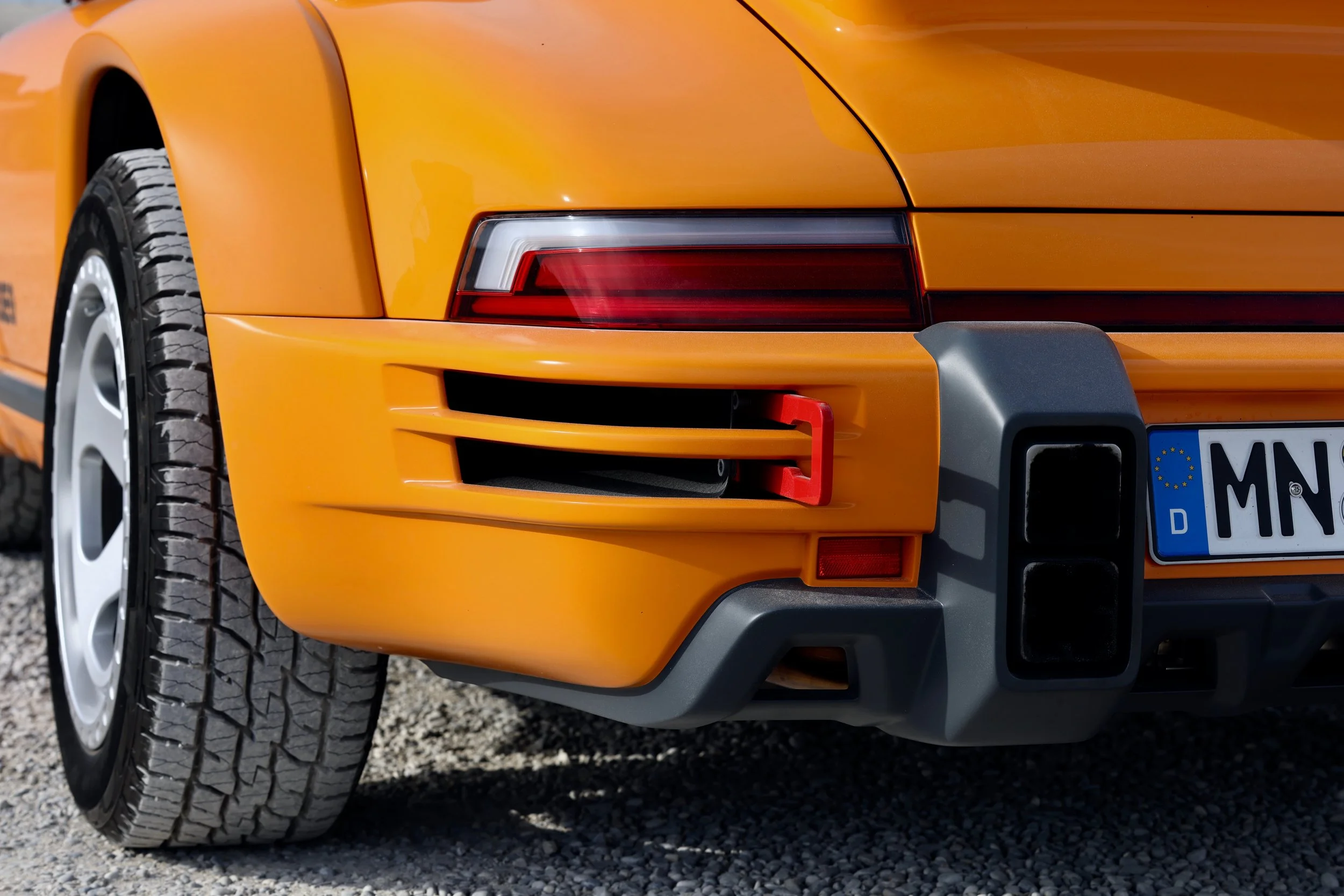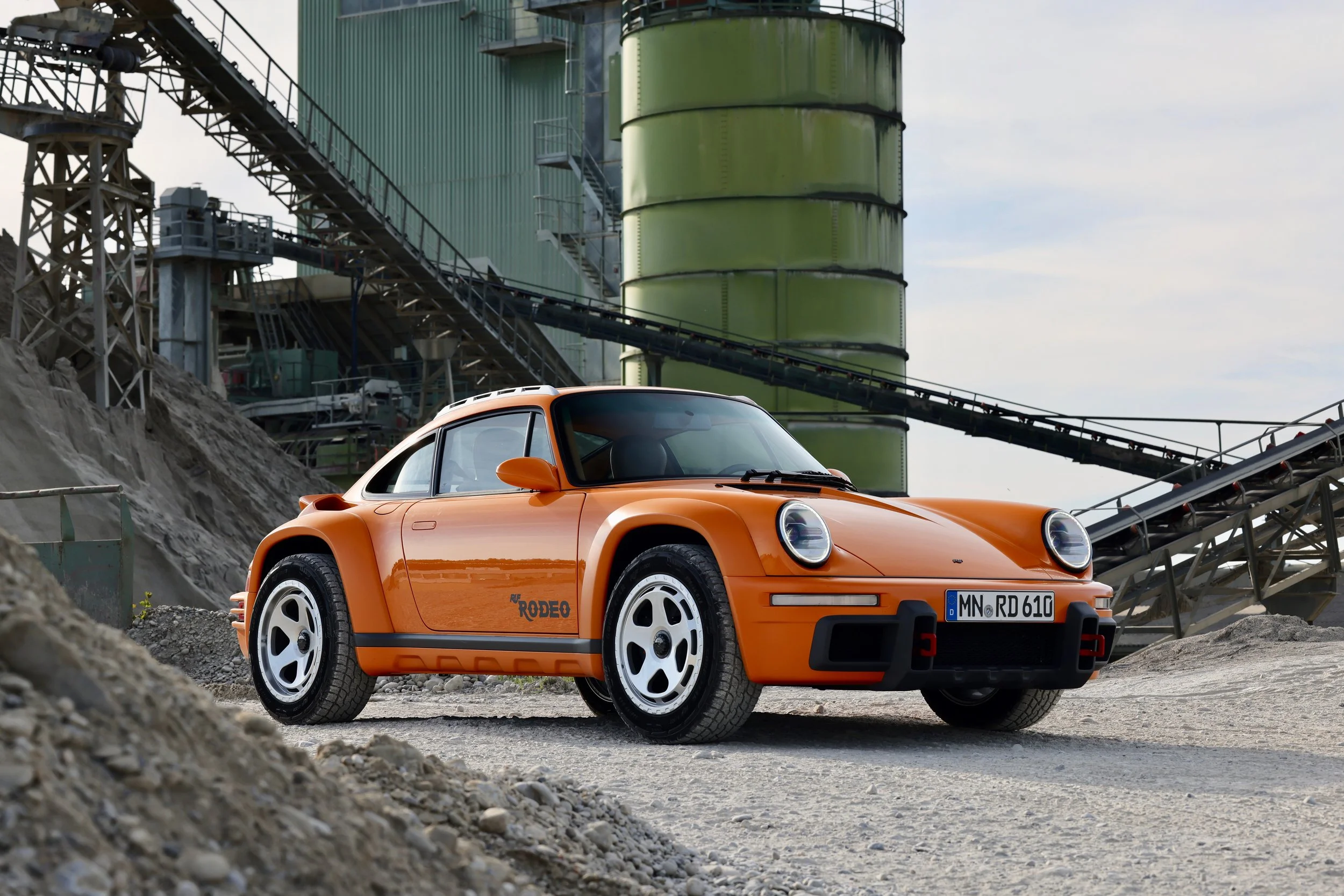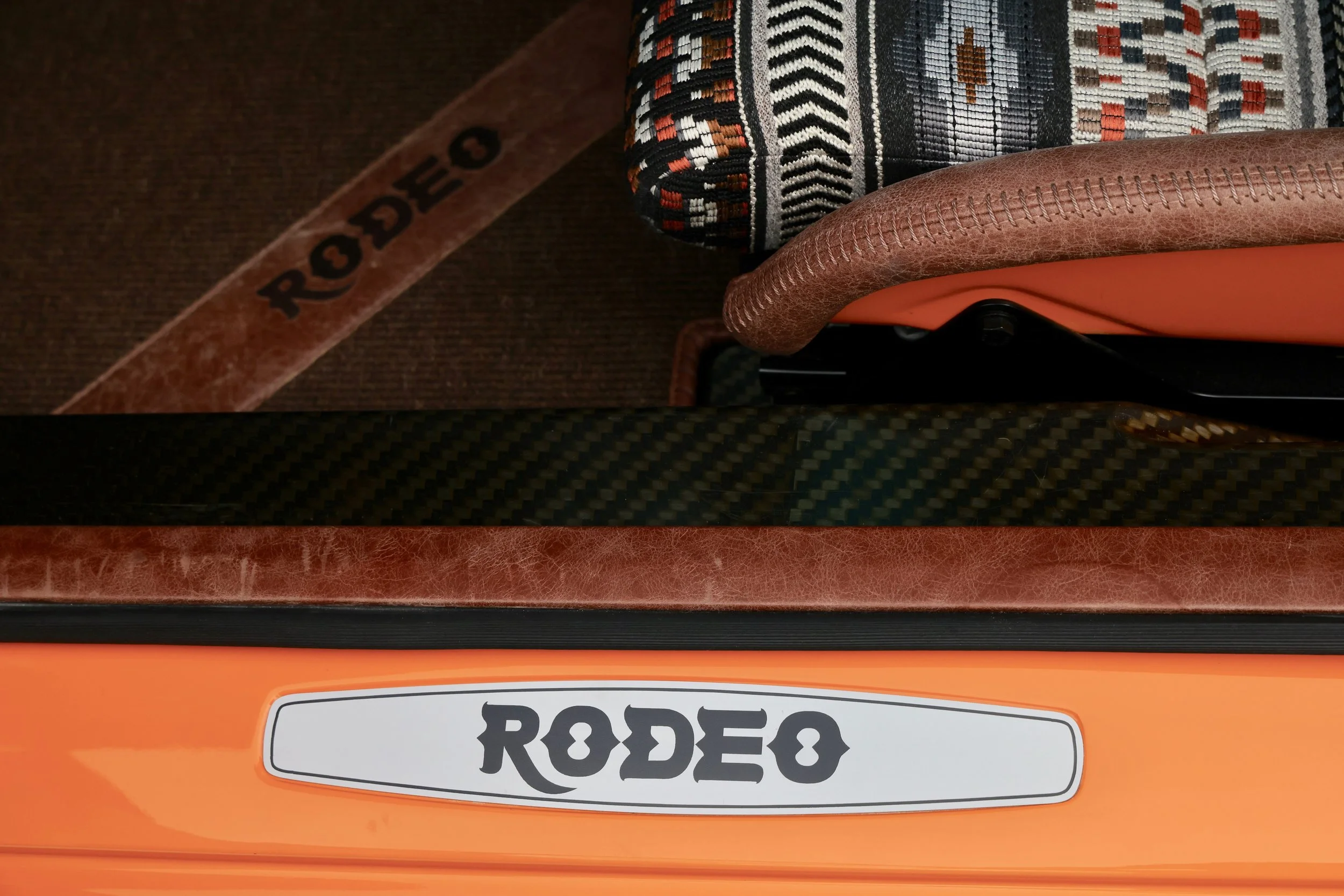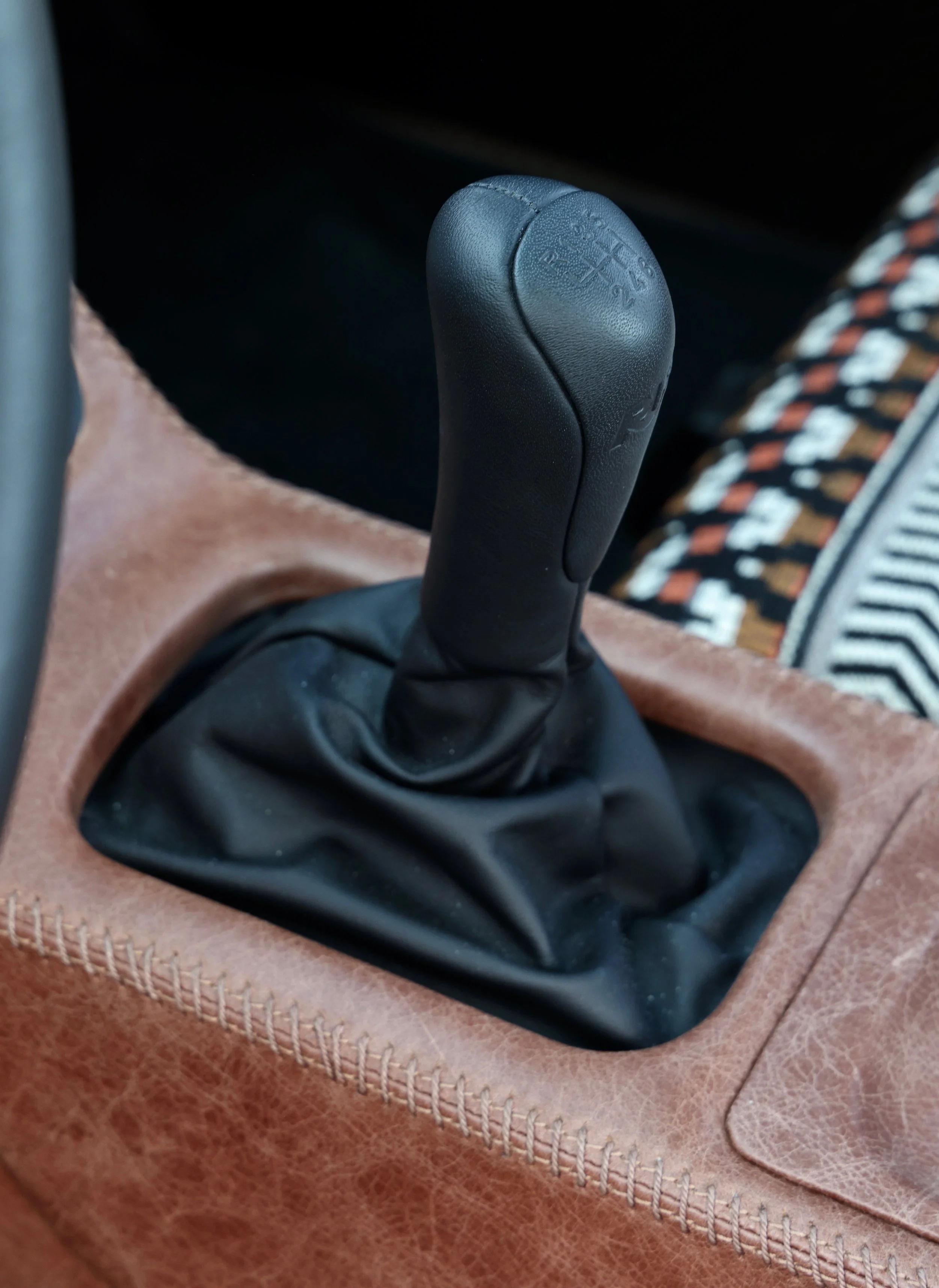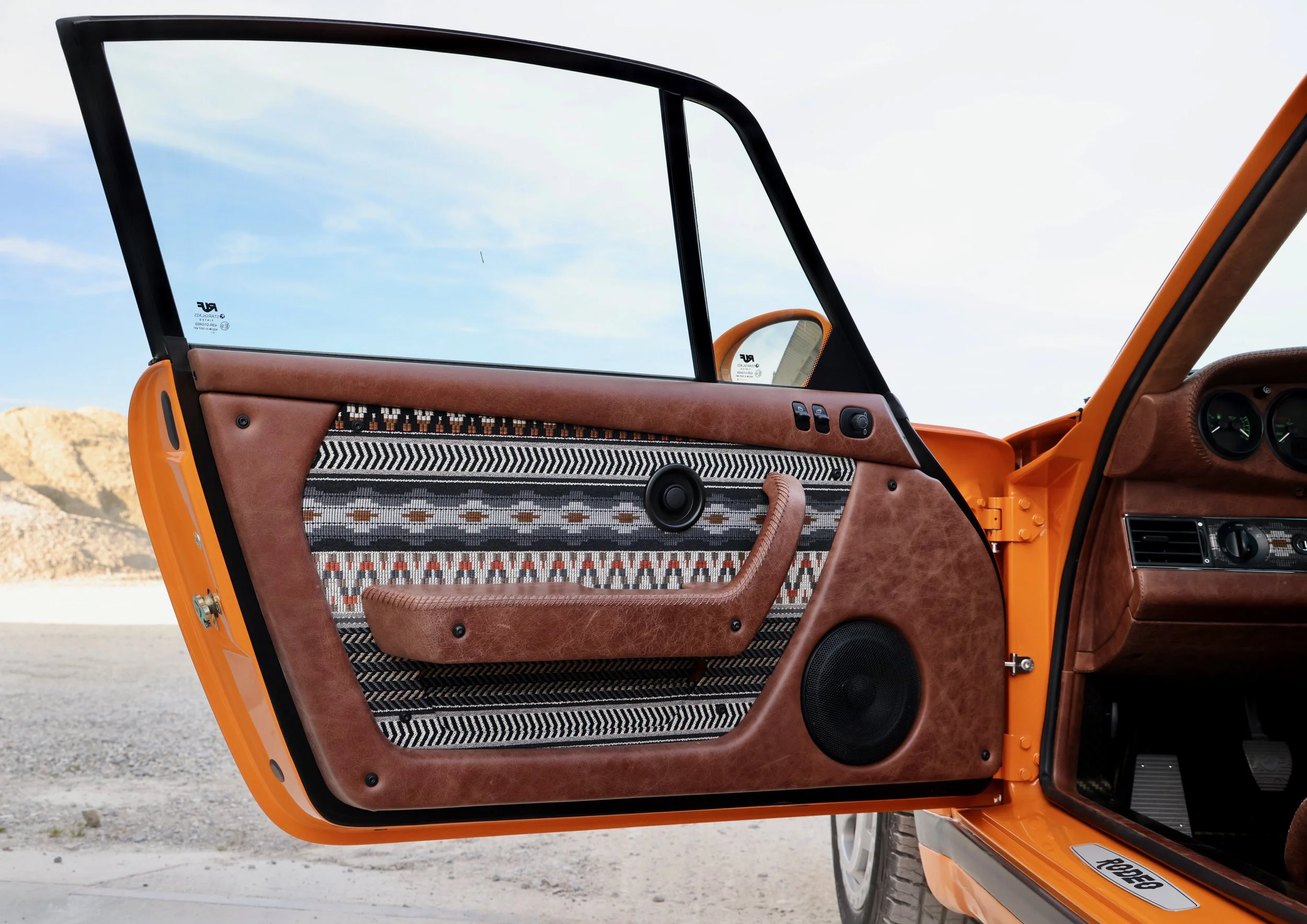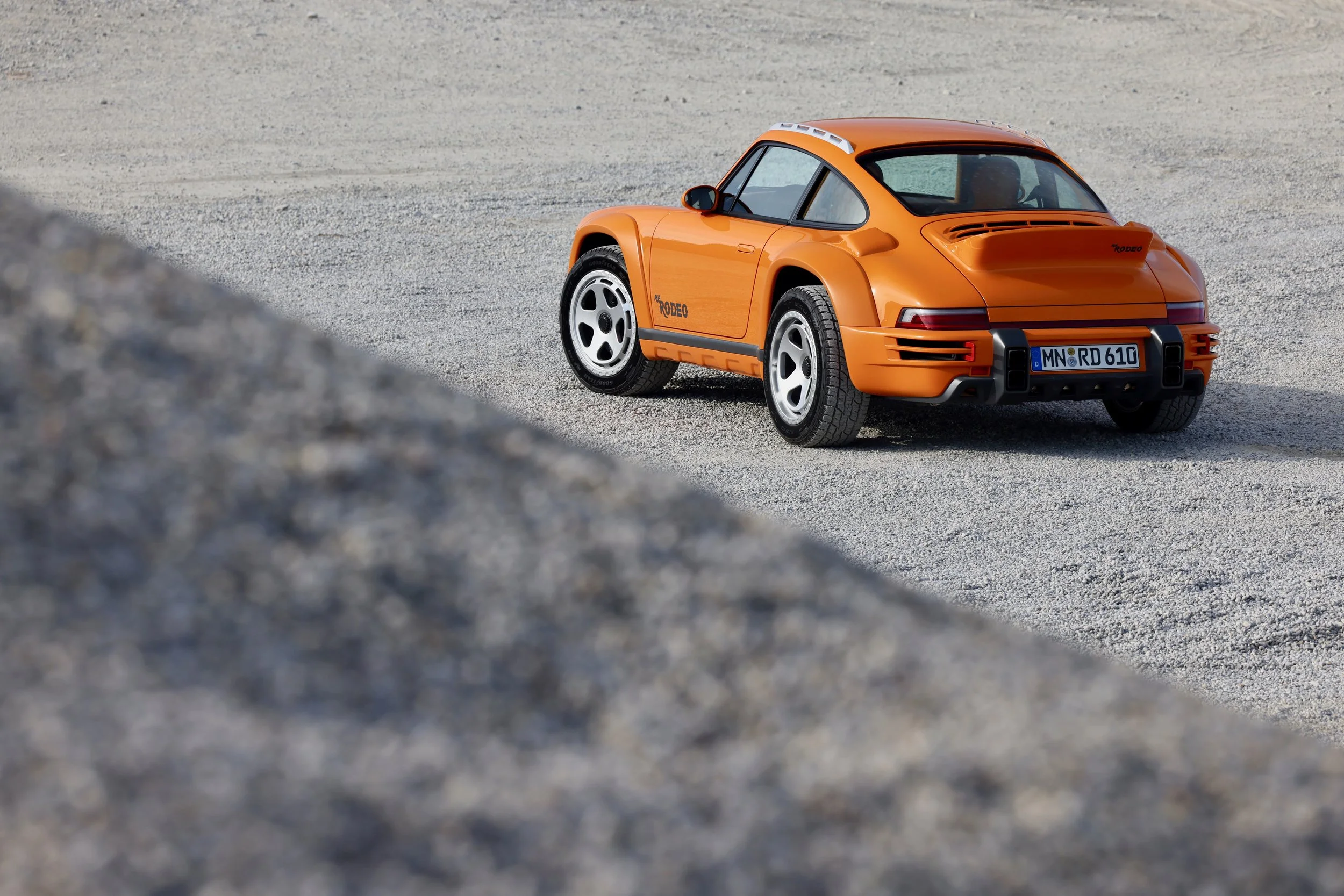Ruff Rodeo
Knowing what to expect of a car you have never driven often comes from past experience with its predecessors. But when a specialist manufacturer like Ruf creates something unique like the Rodeo then all bets are off.
At a more mainstream level, Porsche created and sold out their Dakar, while Marc Philipp Gemballa is currently delivering the 40 units of his Marsien off-road supercar, powered by a Ruf-enhanced Turbo S motor. However, the Ruf Rodeo is something quite different from both these other dual-purpose on-road / off-road machines that conceptually take their cue from Porsche’s 959 Rally car of the mid-1980s.
The seed of the Rodeo idea was planted in late 2019 when Alois and Estonia Ruf mooted the idea of a Ruf model with true off-road capability. “We started work in the fall of 2019, and the non-running concept car was ready in time for the 2020 Geneva Auto Salon,” Alois explained.
“We finished the show car along with the bespoke hard wood floor it was to be presented on, and everything was ready to go when Covid-19 hit the world! Despite Geneva being cancelled we did not give up and instead created a video presentation as a substitute launch for our customers and enthusiasts,” he recalled.
“This gave us a lot of positive feedback from existing and potential clients, and so we decided to build the working prototype that we presented at Monterey Car Week in 2024.”
So where did the Rodeo idea come from?
Alois and his team realised that many Porsche enthusiasts are keen on the idea of a 911 with an elevated ride height and tougher looks as a daily driver. The great reaction to the Geneva Concept car was more proof of the commercial viability of a limited production run.
As the design for the original 2019 Rodeo concept car was well received by potential customers it was important to retain a similar look and feel in the production version.
“The design evolved over about six months with Estonia, Aloisa and myself working through about seven or eight possible variations with our design team,” said Alois.
“We also showed the computer-generated images to a handful of long-time Ruf customers for their reactions and comments. The final iteration of the design was decided by our family and a few of our customer inner circle.”
The pre-production Rodeo is a tough and eye-catching design, and painted Signal Orange you would have to be as blind as a bat to miss it! The big wheel arches bonded to the carbon-fibre bodywork cover enormous wheels and tyres, creating a tough image with visual gravitas that makes most supercars look normal.
In typical Ruf fashion the ram air intakes for the intercoolers are mounted in-board above the big rear wheel arches, with the added advantage here of keeping muddy water away from the intakes when you are navigating shallow water off-road.
The bespoke rear exhaust silencer sends the spent gases to four stacked and squared off exhaust tips in the rear bumper over-riders. For those familiar with Porsche’s design history, this is a nod to the Porsche 356 Carrera 2 and 356 SC/GT models whose exhaust pipes exited through the rear bumper. The ‘70s Ducktail completes the classic 911 look and provides adequate lift reduction for the real-world speed range of this car.
Work on this pre-production car began in February 2024. The structure is a variation of the carbon-fibre body and monocoque with front and rear steel space frames as used on the CTR Anniversary and SCR models. This creates a very light and stiff structure with a torsional rigidity number of 26,000 Nm/degree of twist.
And as with its siblings of normal ride height the suspension double wishbone suspension arms at each corner with race style pushrods operating longitudinally positioned shock absorbers with coil overs operating on a 1-to-4 ratio. Apart from the specific spring and damper rates calibrated to the Rodeo’s off-road capability the suspension is unchanged with the exception of the bespoke wheel carriers providing a static ride height of 229 mm, versus 129mm for the SCR and CTR Anniversary. That extra 100mm equates to 3.94 inches of extra ground clearance.
While the Rodeo shares its basic suspension with the rear-driven only SCR and Anniversary the Turbo S 4WD system is present under the Rodeo. While the all-wheel-drive hardware is standard Porsche Turbo, the differential ECU’s that are not adjustable on the Turbo have been customised to allow driver control of the front-to-rear torque split.
For maximum fun Ruf added a knob on the dashboard that allows the driver to over-ride the fixed factory settings and reduce the torque distribution in the gearbox to as little as five percent at the front axle so you can indulge in glorious power slides if you wish. Reducing stress on the driveline components when running in this configuration is another reason for the engine output being reduced.
We noticed that the Rodeo test car was equipped with 350mm diameter ceramic discs all round with six-pot front and four-pot rear callipers. We queried Alois on this since off-road vehicles normally have steel brakes to avoid expensive damage should a stone become trapped between the disc and calliper.
“We give the customer the option,” he replied.
“If they intend to drive the car off-road then we would always recommend steel brakes, but on this pre-production car we decided to use ceramics for the best braking performance and pedal feel.”
The distinctive 8.5J x 18-inch centre-lock forged alloy wheels are made by a new German manufacturer and are shod with custom-made 235/55R18 Goodyear rubber wearing the ‘Ruf Rodeo’ logo on their sidewalls. These five-spoke wheels have extra cooling slots on their circumference and reinforce the purposeful demeanour of this car.
Porsche’s Dakar is powered by the 2,981cc bi-turbo Carrera S motor with 480hp and 570 Nm of torque to push 1,605kg (DIN). The factory Turbo S weighs an even more hefty 1,640kg, and its 3,745cc bi-turbo motor makes 650hp with 800Nm of torque.
Ruf changes the equation by using the older 3,600cc bi-turbo engine tuned to 610hp and 700Nm of torque.
This engine mates perfectly with the manual six-speed gearbox, whose torque limitation obviates its use with the more potent 992 Turbo S motor. The gearing is also lowered to improve low-speed acceleration and response. Acknowledging that high speed performance is irrelevant here with the increased ground clearance and speed restricted off-road tyres, top speed is electronically-limited to 250km/h or 155mph.
Thanks to its lightweight racecar construction methods the Ruf Rodeo tips the scales at a modest 1,350kg. Now here comes the surprise. While Ruf is renowned for turning up the wick to 11 on their fettled engines, the off-road focus of the Rodeo required a change of tack with the emphasis on low-end torque rather than top-end power.
Acknowledging that high speed performance is irrelevant here with the increased ground clearance and speed restricted off-road tyres, the 610hp and 700Nm of torque is immediately offset by the fact that the Rodeo is a whopping 290 kg lighter than the factory Turbo S, so the power-to-weight ratio remains roughly similar.
The most significant mechanical change that affects the way the Rodeo drives is the six-speed manual gearbox with limited slip differential and dual-mass flywheel that gives the driver a much greater feeling of control than with the PDK-only Turbo S.
Without prior knowledge most onlookers will only realise the Rodeo has a manual gearbox when they calm down enough from drinking in the colour pantheon of the unique Rodeo interior fabric and clock the short manual gear-lever sitting demurely on the centre console.
This themed interior trim was all Estonia’s work. As she and Alois met many years ago in Texas where she had studied and was living at the time, it is no surprise that the chosen fabric has a distinctive native American look to it that evokes images of the Wild West.
Considering the power and torque that has to be transmitted reliably it is no surprise that the Rodeo’s clutch is on the heavy side. Once on the move however, it feels normally weighted and positive with each upshift, the low-end punch of the bi-turbo motor making for free and easy driving.
The extra 100cm or 3.94-inch increase in ride height is actually discernible from the exquisitely trimmed bucket seats, the all-round view being better than that from a normal 911. The perceived headlight performance at night should also benefit as well.
While the 4WD system provides reassuring grip and handling on off-road, the big knobby treaded rubber is never going to be as grippy as low-profile tyres on tarmac. Even though I knew this instinctively, it was still a surprise when I dropped the hammer on the road in second gear and found the massive torque hit breaking the grip of all four tyres momentarily as the electronics took a second to hook things up and restore iron-fisted control.
Once order had been regained the Rodeo shot off down the road, each upshift simply turning the deep well of power and torque into rapid forward motion.
The knowledge of reduced mechanical grip made me more hesitant than usual to aim the Rodeo at a familiar bends with the pace I would adopt with the SCR or CTR Anniversary. Nonetheless the Rodeo’s progress across familiar local country roads was still remarkably rapid, and the ceramic brakes were put to good use scrubbing off speed on the way into bends.
The Ruf family affair is what draws loyal customers to make the pilgrimage to their Pfaffenhausen base. Commissioning a Ruf car onto which you stamp your own individuality is like automotive haute couture tailoring. And as with a Savile Row suit, every last stitch proudly represents something valuable stamped with your own unique personal identity.


